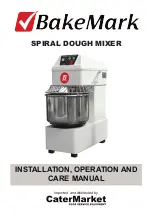
BiG SiX User Guide
About SuperAnalogue
SSL’s SuperAnalogue technology is the sum of an applied design philosophy, constant invention, and dedication to optimising
every detail of our precision audio products. There are many contributing aspects, including our bespoke circuits, ground-breaking
low-noise gain control, servo-coupled amplifier stages, and many more. The design of BiG SiX is unique amongst small footprint
mixers in that it uses SuperAnalogue technology to bring large console sonics and processing into a very compact design.
Listed below are some of the main benefits SuperAnalogue philosophy brings to BiG SiX.
Wideband audio
Typically a 20 kHz upper frequency limit is recognised as adequate for audio. A lucky few people can identify frequencies beyond
20 kHz. However, there is a secondary hearing mechanism, directly related to ‘rise-time’ (the transient performance of components)
and evidence to show that even though the basic frequency spectrum of human hearing degrades over time, our sensitivity to
rise-times does not. In addition, Transient Intermodulation Distortion (TIM) is a real - if difficult to measure - issue that brings high
frequency ‘waste’ to bear on the audible spectrum in poor or bandwidth-limited designs. Feedback paths in amplifier circuitry are
a good example. For fast, accurate rise times and low TIM, SSL implements precision, high-frequency analogue technologies and
tests everything to better than 80 kHz. BiG SiX’s main signal path frequency response extends to beyond 100 kHz.
Elimination of signal path electrolytic capacitors
The physical construction of electrolytic capacitors means that their performance is imprecise and they are vulnerable to
electromagnetic interference so even expensive ‘high-quality’ electrolytics do not meet our standards. In addition, over time and
with temperature variations, electrolytic capacitors degrade and become ‘leaky’ resulting in significant noise issues, altered sonic
character, and shortened product life. SSL avoids using electrolytic capacitors for decoupling between analogue stages wherever
possible. Instead we use advanced DC servo coupling techniques for wide bandwidth, low noise and high precision DC offset
control.
Discrete design and innovation
Many modern analogue audio products are the result of the ‘cookbook’ approach where off-the-shelf blocks are strung together to
fulfil a practical brief, but lack the additional details that take them from functional to fantastic. To do that, you have to understand
how to augment commercially available components with discrete elements, do original research and sometimes even design
your own components.
SSL does not do ‘data-sheet design’ and continues to optimise and improve upon data-sheet specifications and ‘serving
suggestions’ - we have even licensed our advances back to semiconductor manufacturers. BiG SiX represents the cumulation
of over 40 years of experience and expertise in improving the canon of analogue music electronics to continually exceed and
progress our own high standards.
Not one component, a whole design philosophy
Our philosophy is simple, we spare nothing in designing and manufacturing the best precision music tools available anywhere.
There is no single magic stage in BiG SiX - everything from the pre-amps through the line level electronics, signal processing and
output stages plays its part.
Summary of Contents for BiG SiX
Page 1: ...BiG SiX www solidstatelogic com BiG SiX User Guide ...
Page 4: ...BiG SiX User Guide This Page Is Intentionally Almost Blank ...
Page 8: ...Introduction H BiG SiX User Guide This Page Is Intentionally Almost Blank ...
Page 14: ...BiG SiX User Guide Console Overview 6 This Page Is Intentionally Almost Blank ...
Page 54: ...46 BiG SiX User Guide Notes Notes ...






































